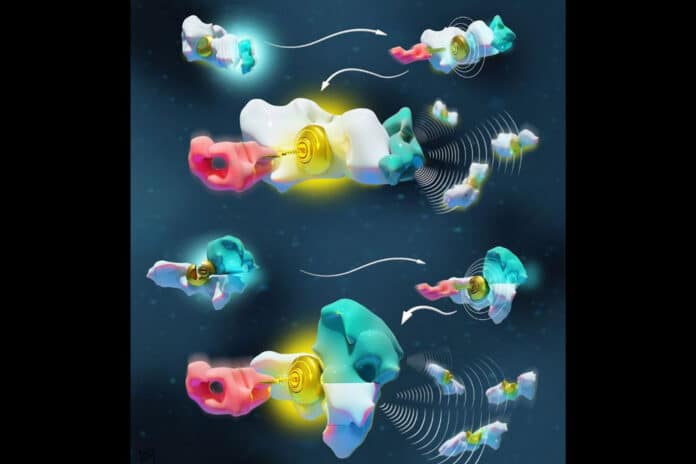The billions of nanomachines and nanostructures that make up living things communicate with one another to form higher-order entities capable of performing numerous critical tasks, including moving, thinking, surviving, and procreating.
Chemical communication and the capacity to combine several chemical inputs into a single output have been essential for the emergence of life. The development of molecular languages, also known as signaling systems, which ensure that all of the molecules in living things cooperate to carry out specified activities, is crucial to understanding how life first appeared on Earth.
Université de Montréal scientists have successfully recreated and mathematically validated two molecular languages at the origin of life.
Allostery is one well-known molecular language. A molecule connects to another molecule and changes its structure, causing it to be directed to either trigger or inhibit activity. This is the “lock-and-key” mechanism of this language.
Multivalency, commonly called the chelate effect, is a different, less well-known molecular language. It functions like a puzzle: as molecules bind to one another, the binding of a third molecule is either made easier or harder by simply increasing the binding interface of the first molecule.
Although these two languages can be found in all molecular systems of all living things, scientists have only lately begun to grasp their principles and rules. As a result, they are now being used to develop and program cutting-edge artificial nanotechnologies.
The study’s principal investigator, UdeM bioengineering professor Alexis Vallée-Bélisle said, “Given the complexity of natural nanosystems, before now nobody could compare the basic rules, advantages or limitations of these two languages on the same system.”
To do so, scientists came up with the idea of creating a DNA-based molecular system that could function using both languages.
The scientists uncovered the parameters and design guidelines to program the communication between molecules within a nanosystem by discovering simple mathematical equations that could effectively explain both languages.
For instance, while the comparable allosteric translation only allowed control of the response’s sensitivity, the multivalent language allowed control of both the sensitivity and cooperativity of the molecules’ activation or deactivation.
With this new knowledge at their disposal, scientists designed and engineered a programmable antibody sensor that enables the detection of antibodies over various concentrations using the language of multivalency.
Vallée-Bélisle said, “As shown with the recent pandemic, our ability to precisely monitor the concentration of antibodies in the general population is a powerful tool to determine the people’s individual and collective immunity.”
Journal Reference:
- Dominic Lauzon and Alexis Vallée-Bélisle. Programing Chemical Communication: Allostery vs Multivalent Mechanism. Journal of American Chemical Society. DOI: 10.1021/jacs.3c04045
